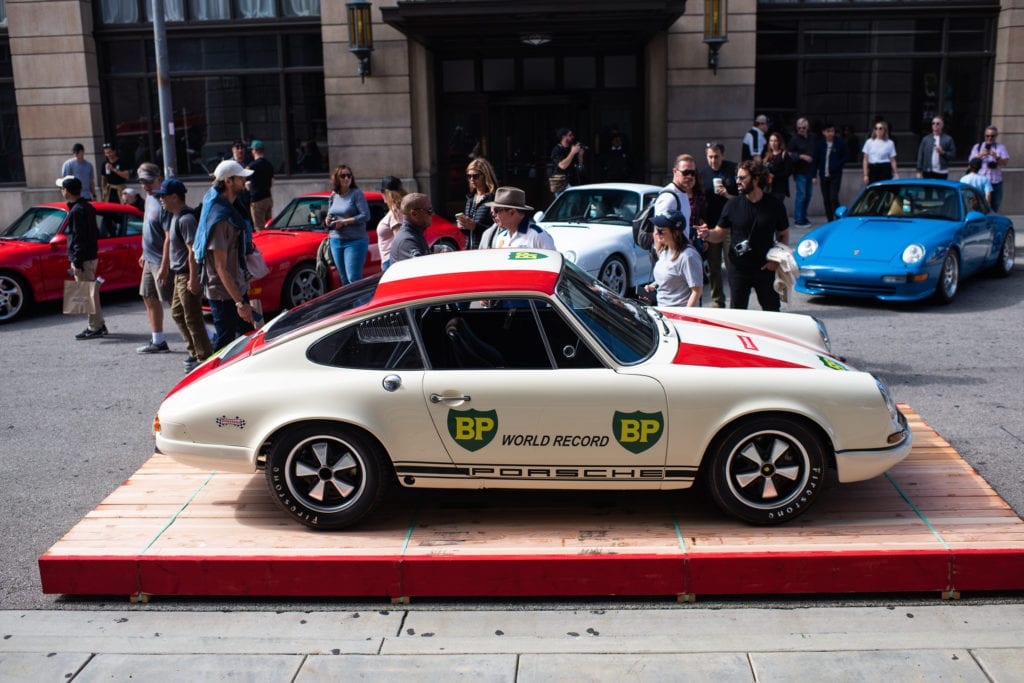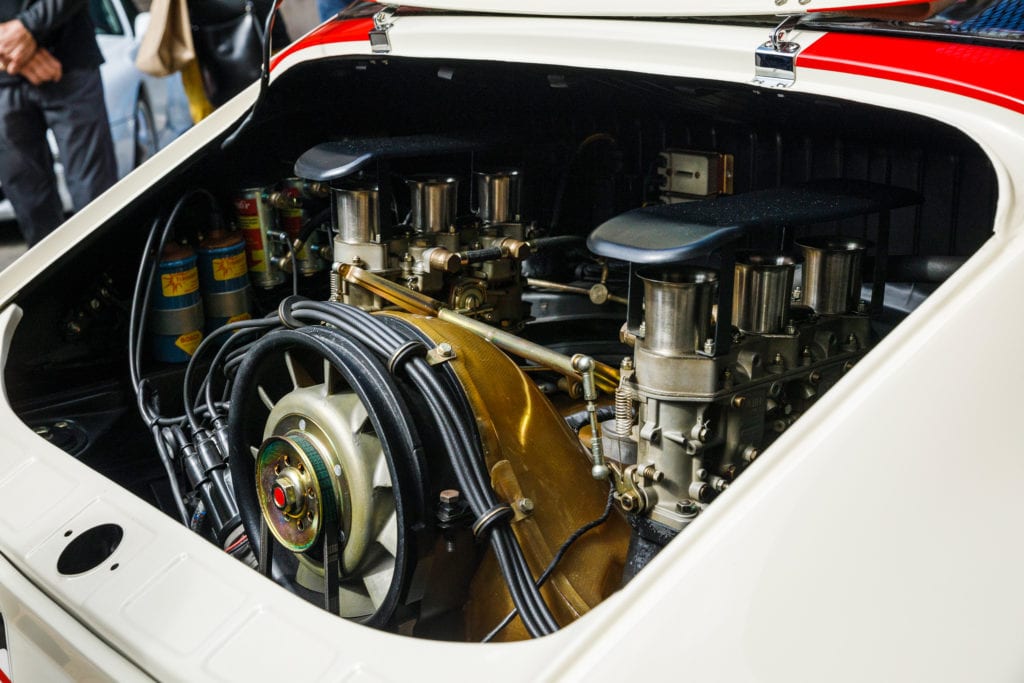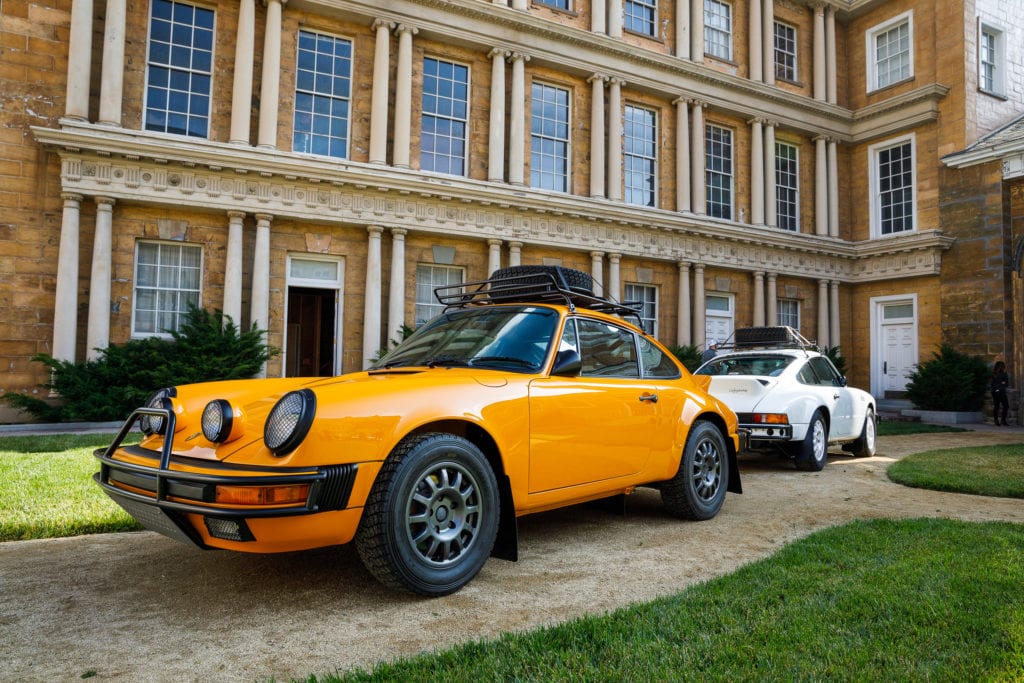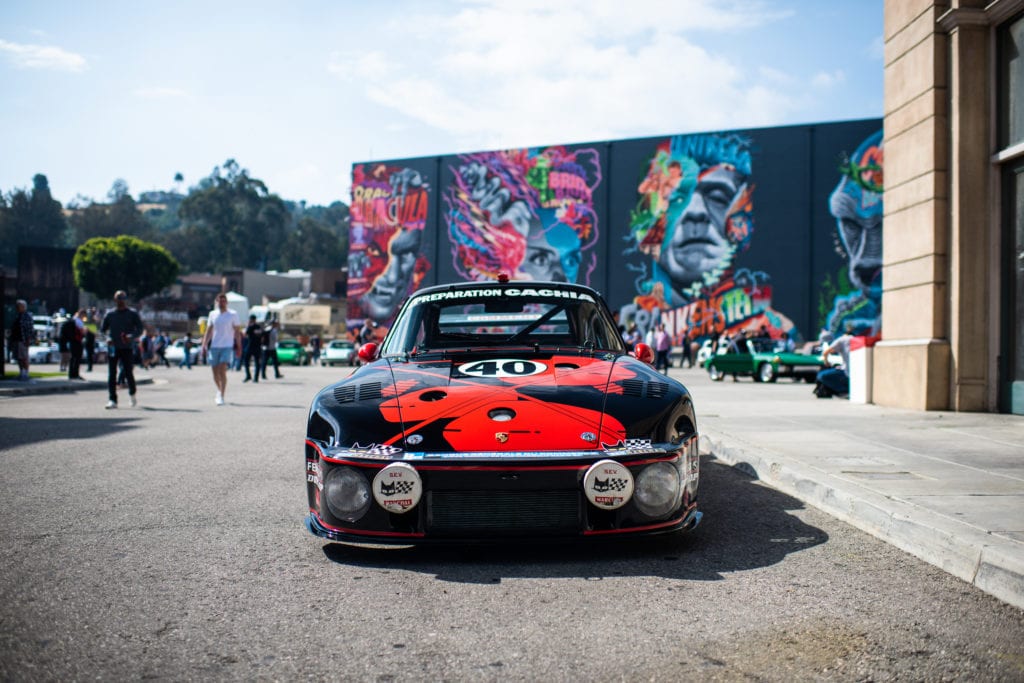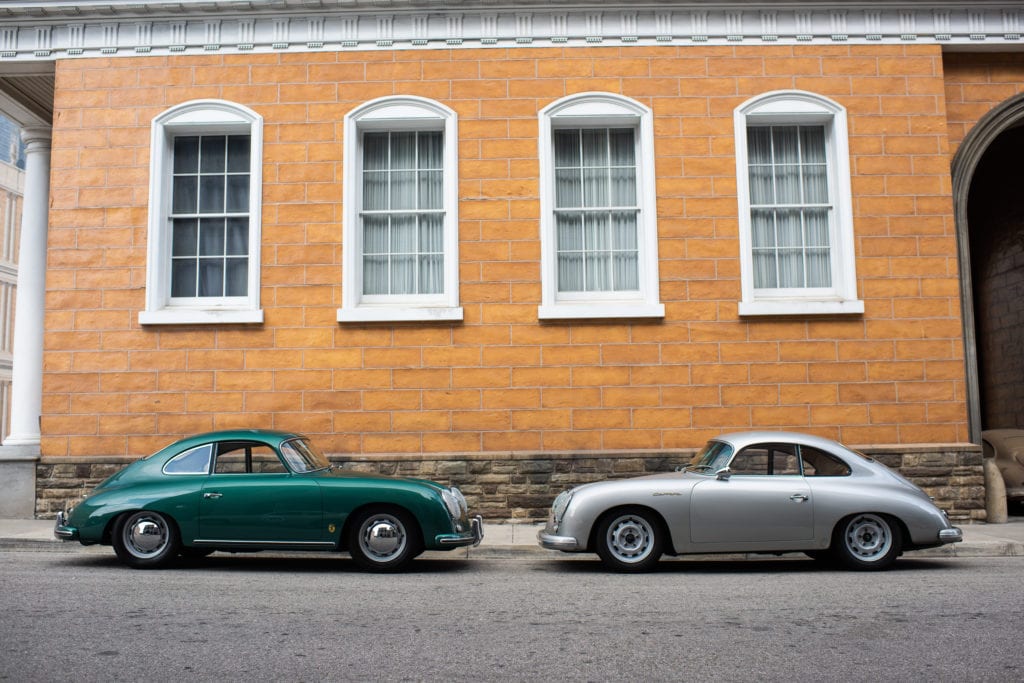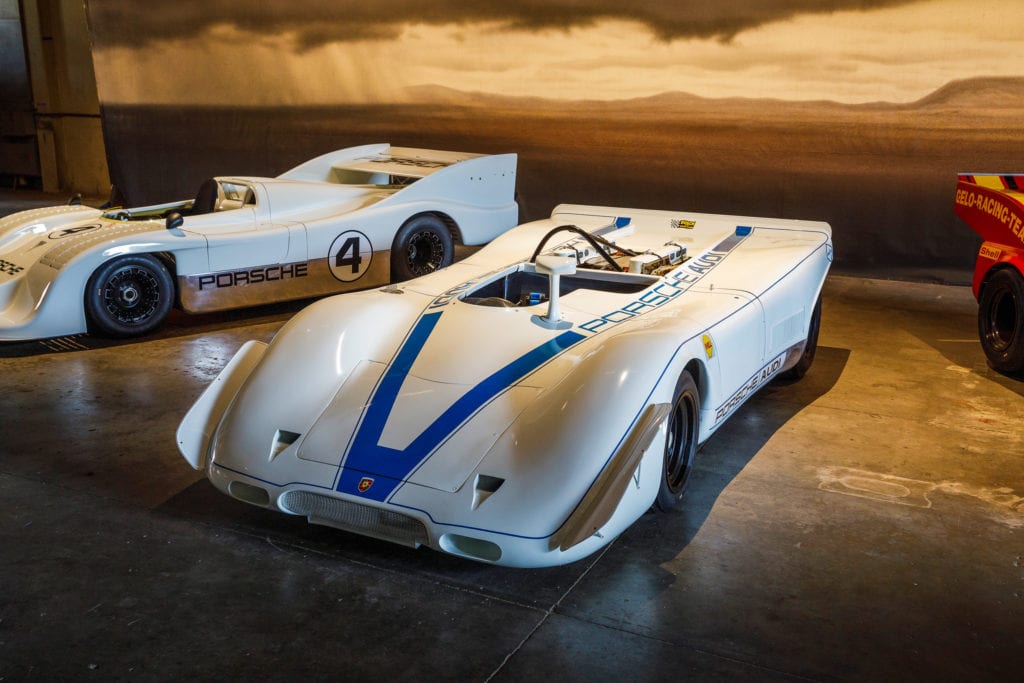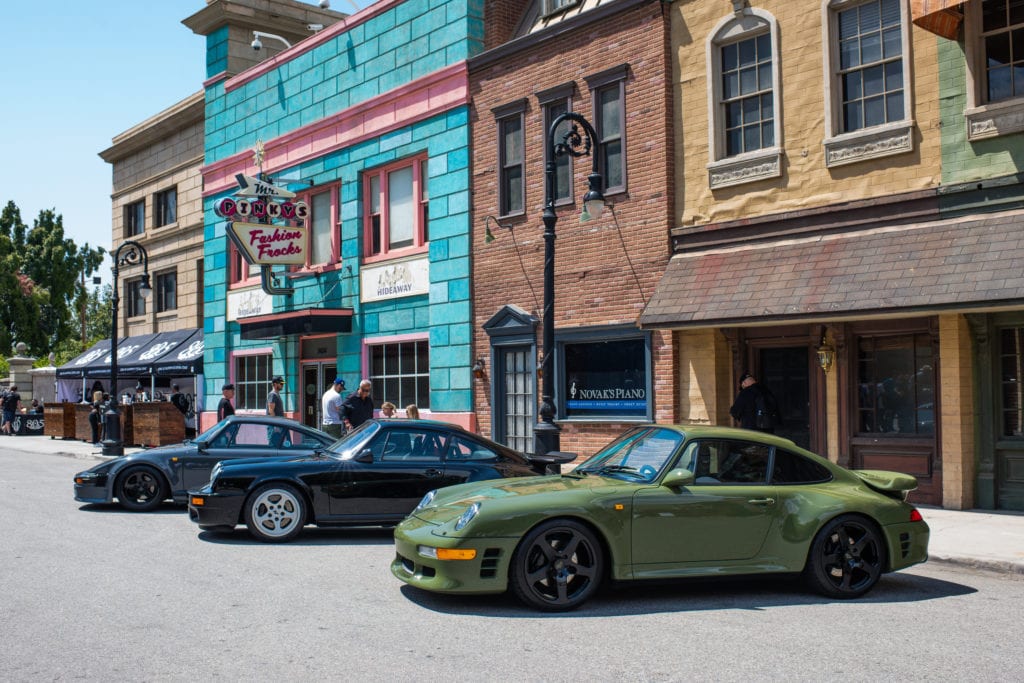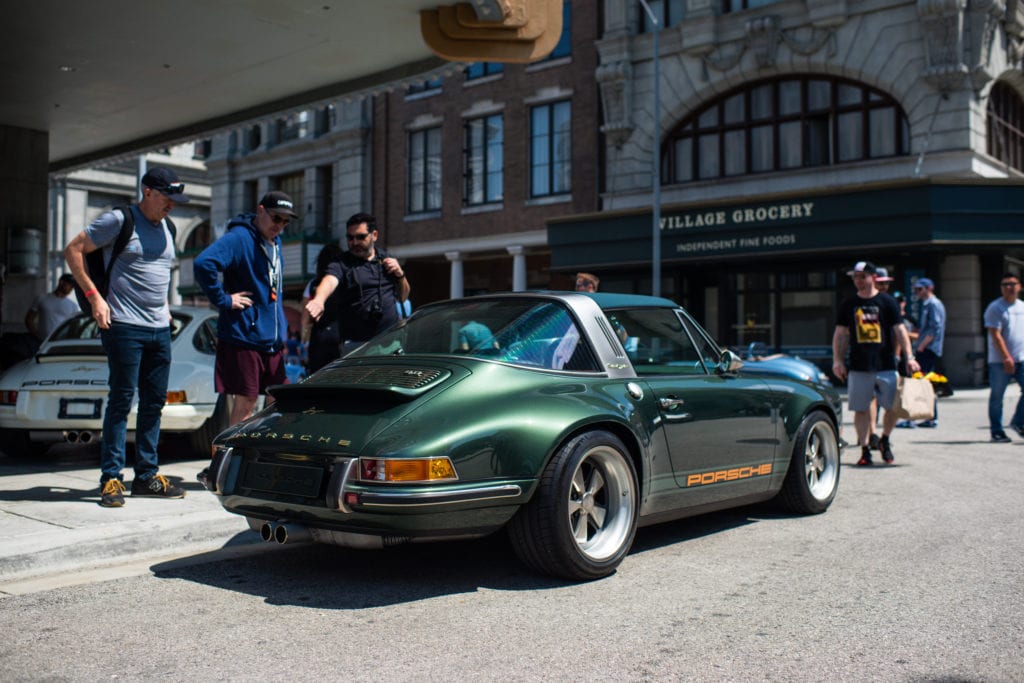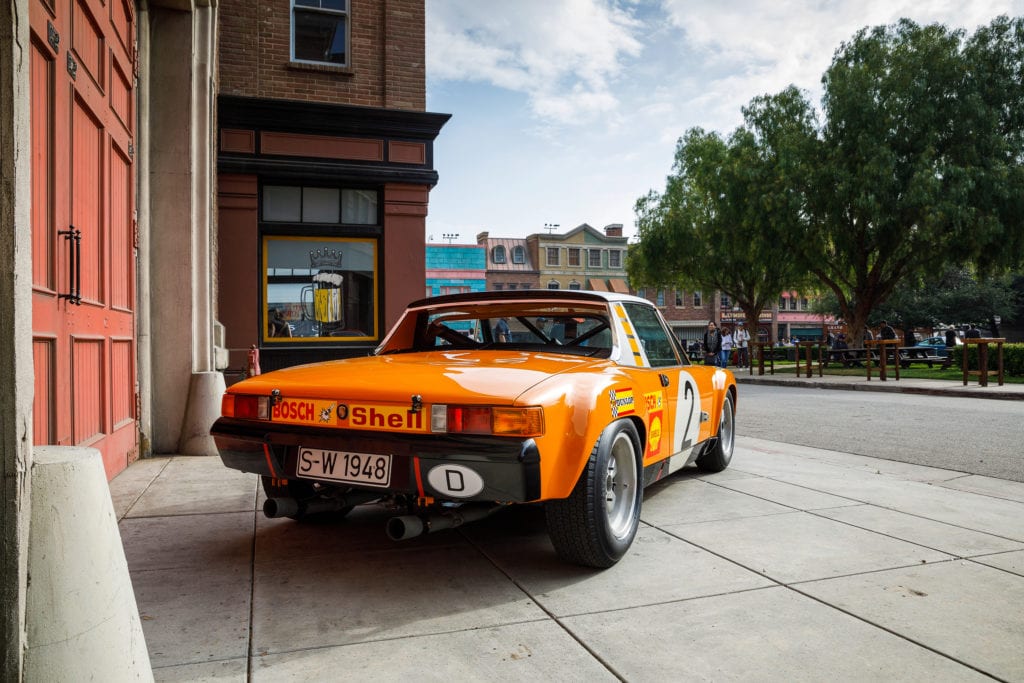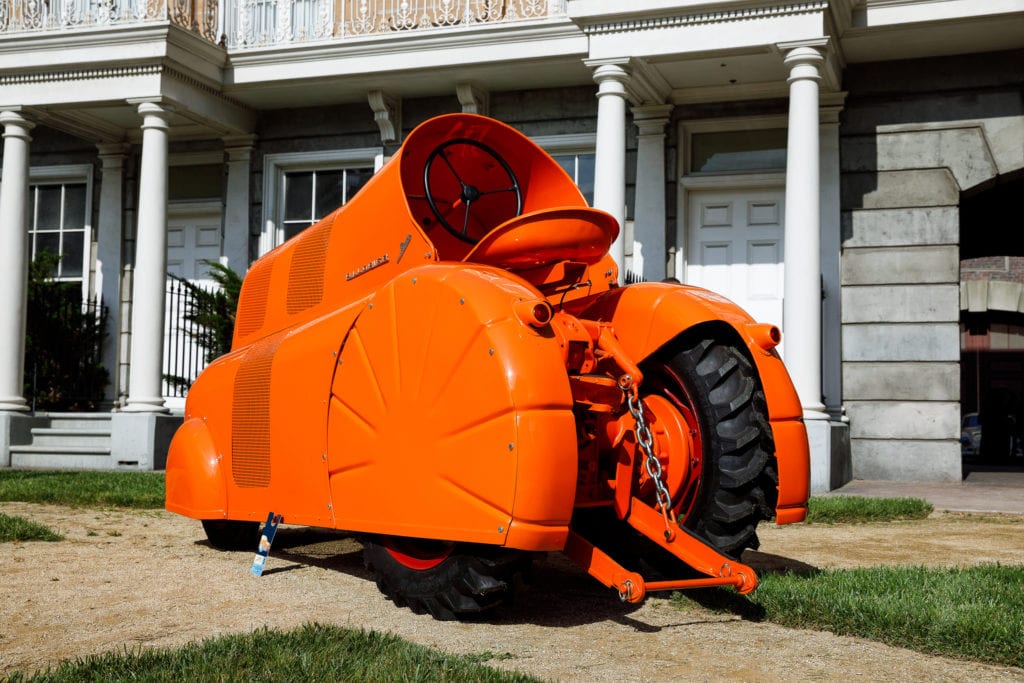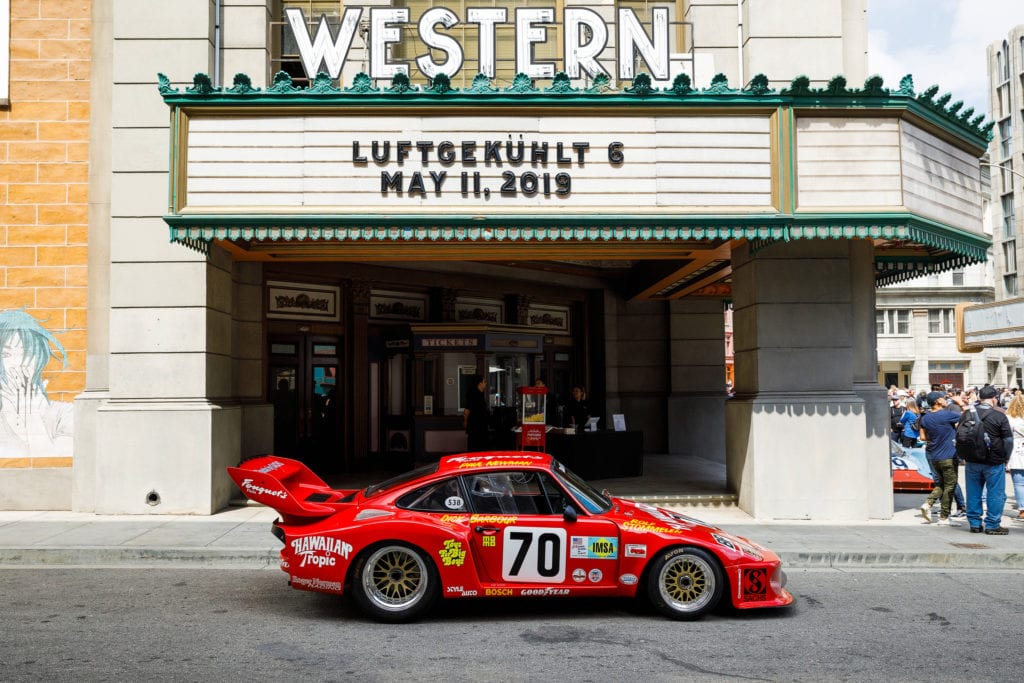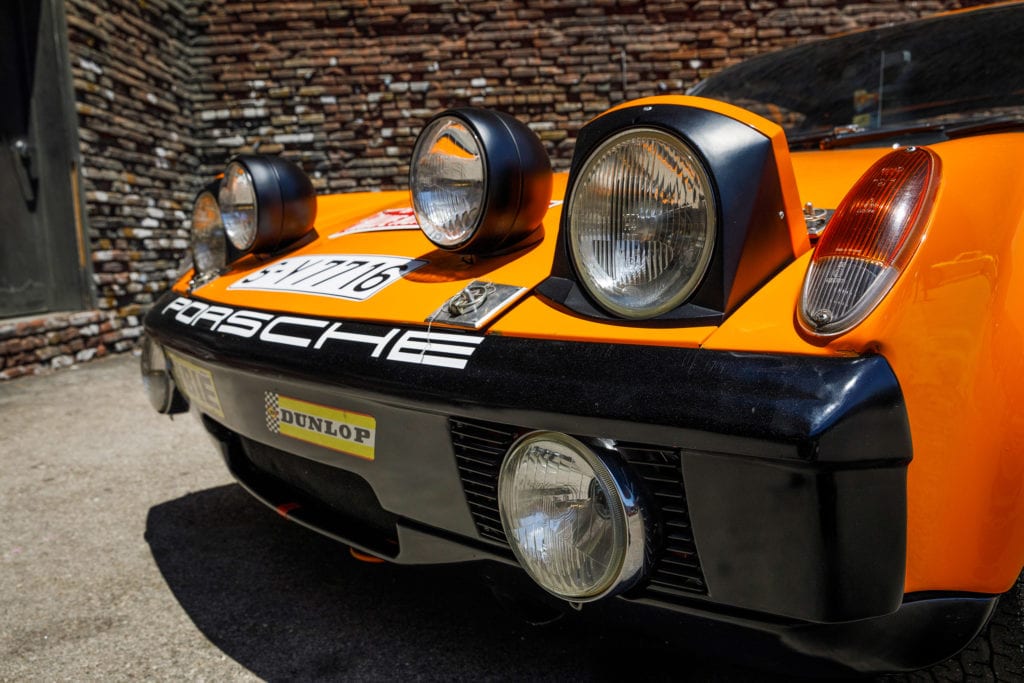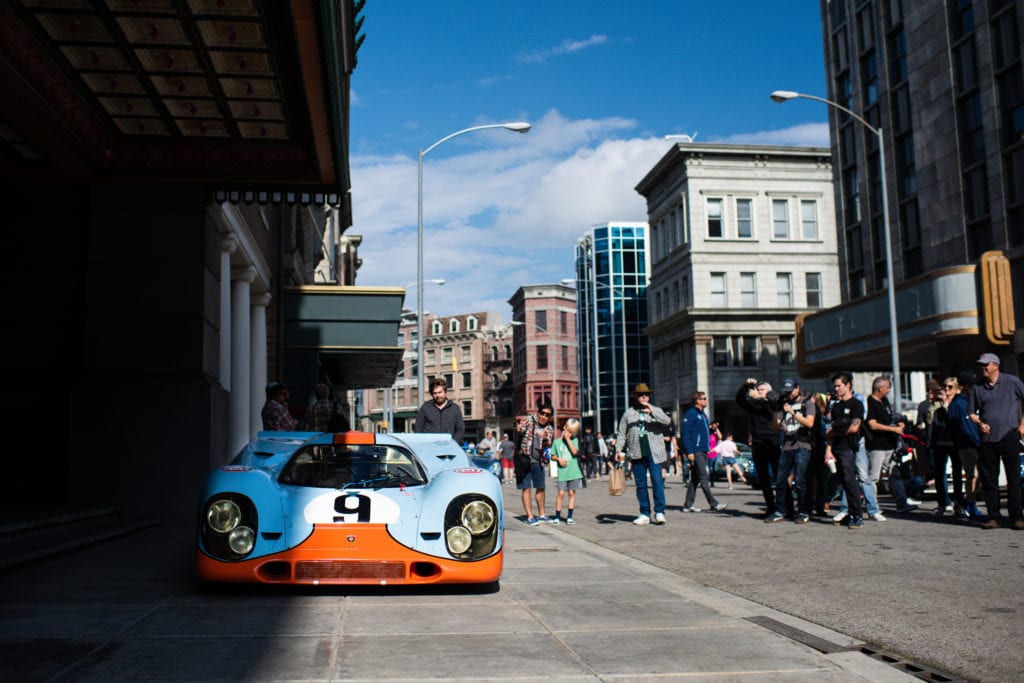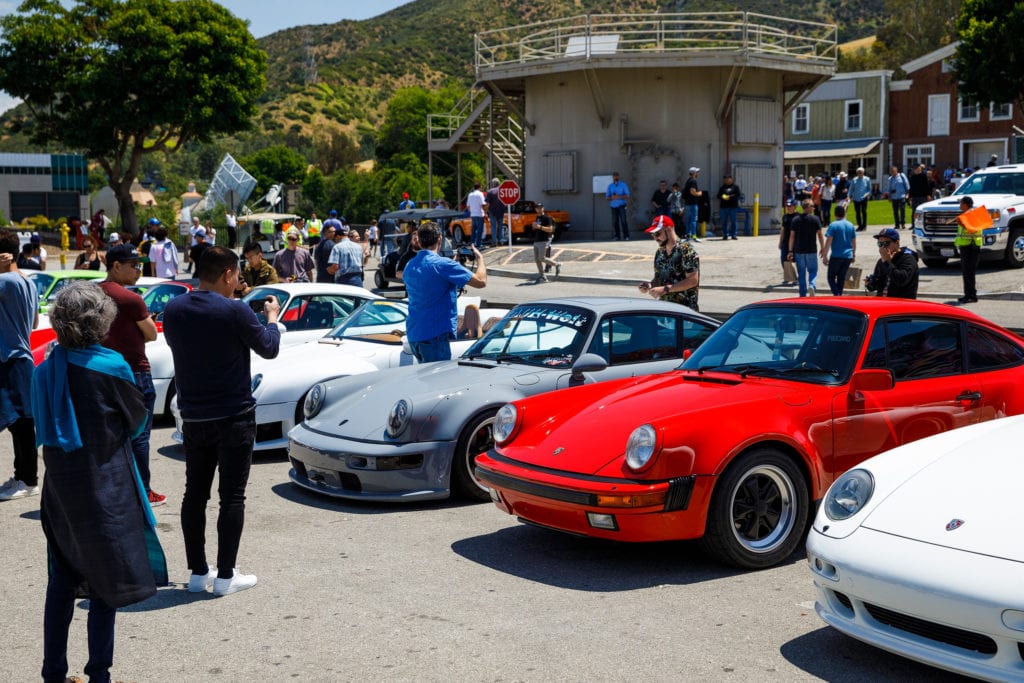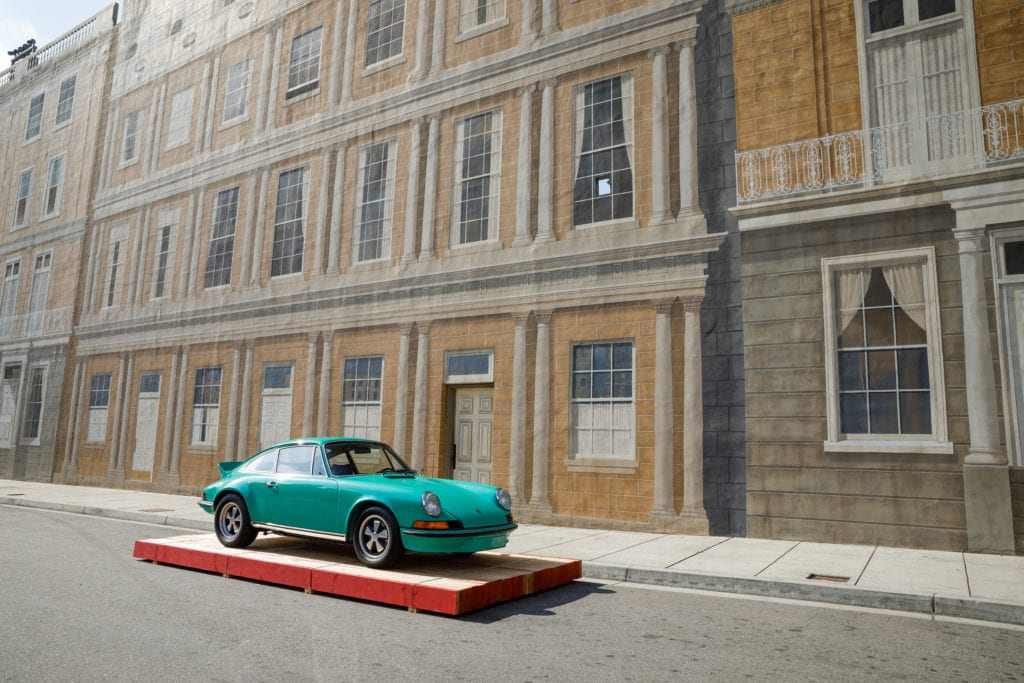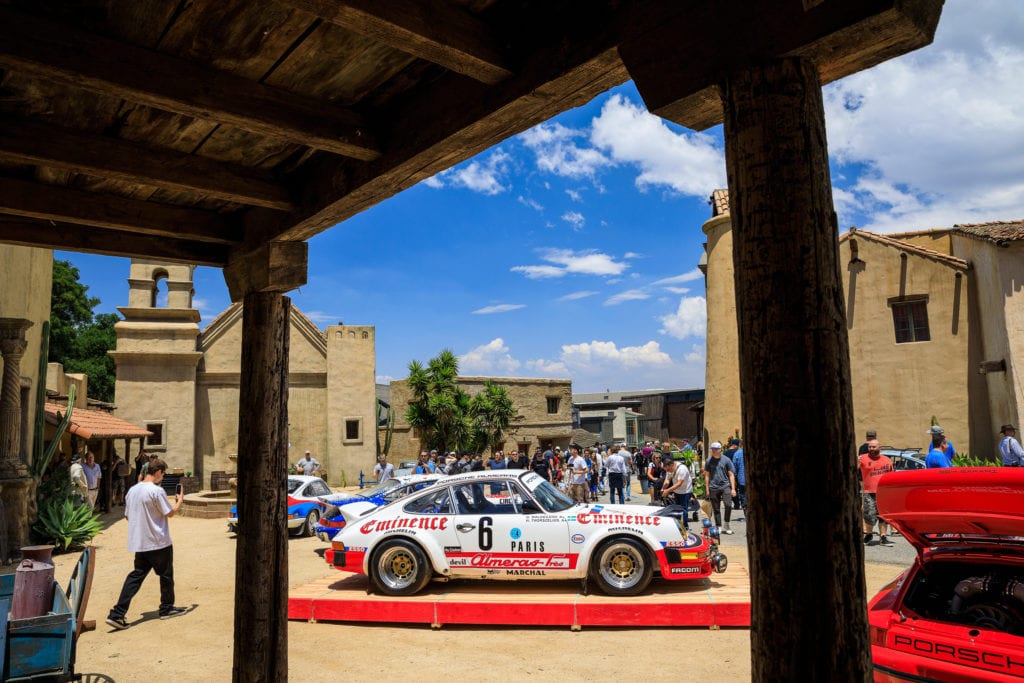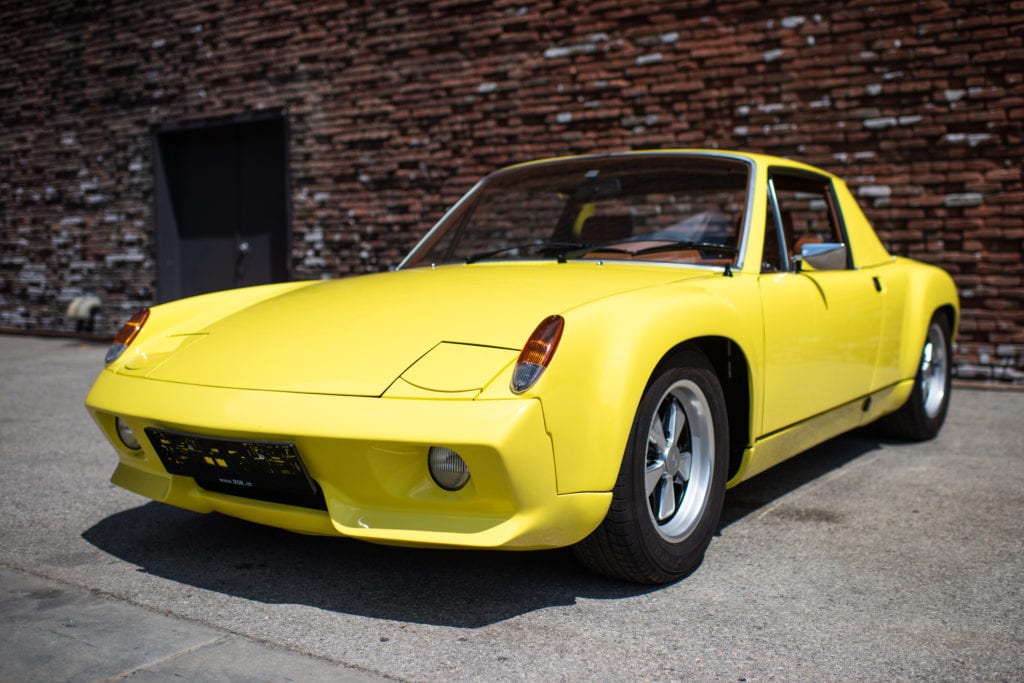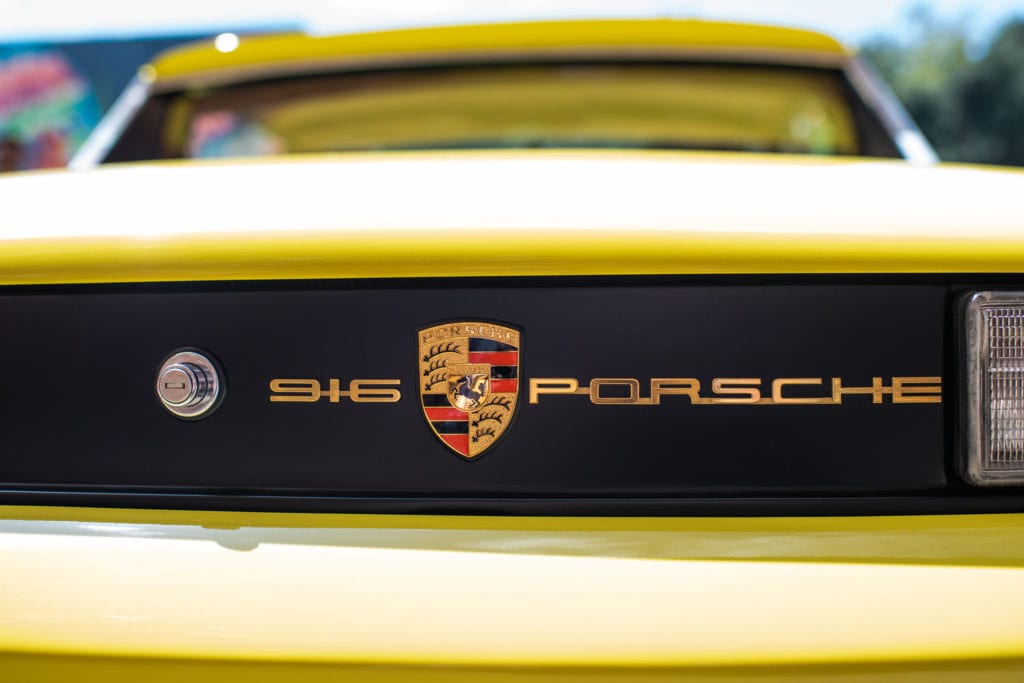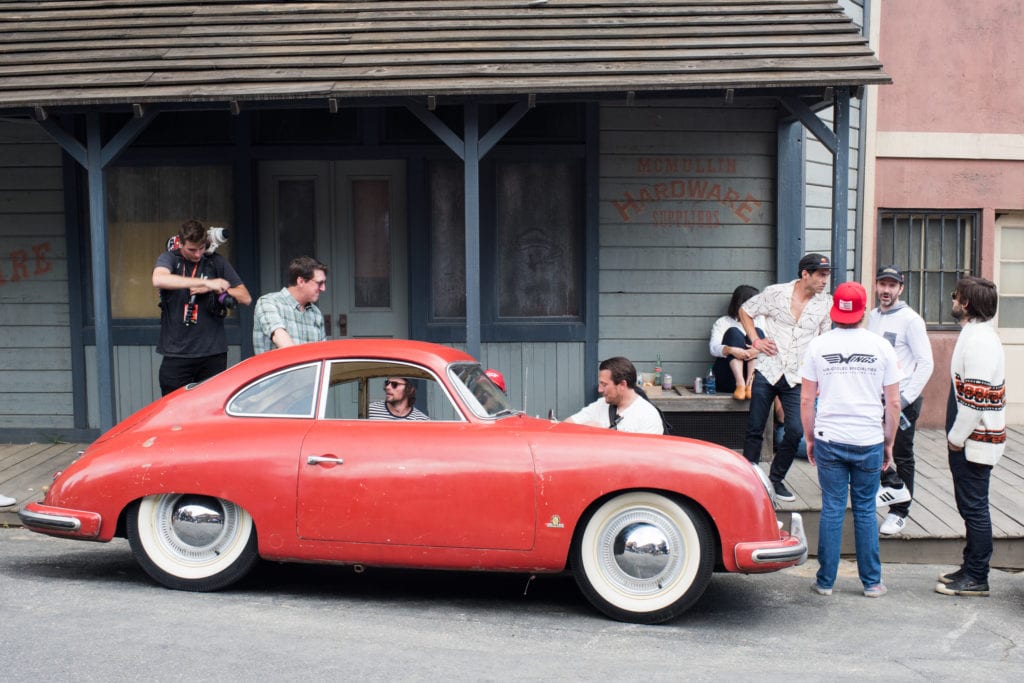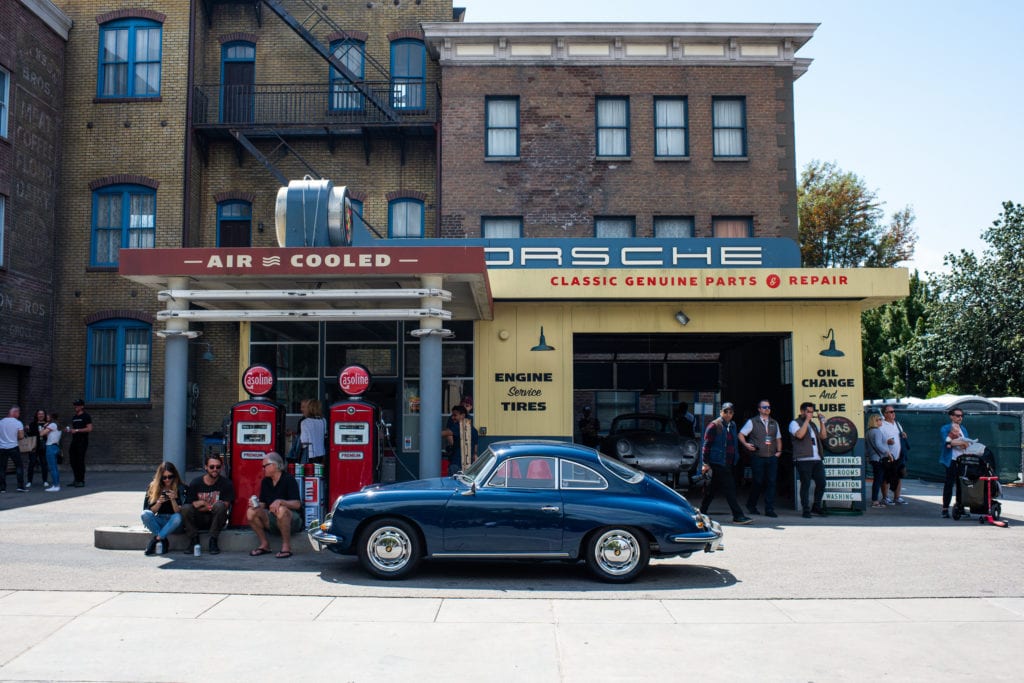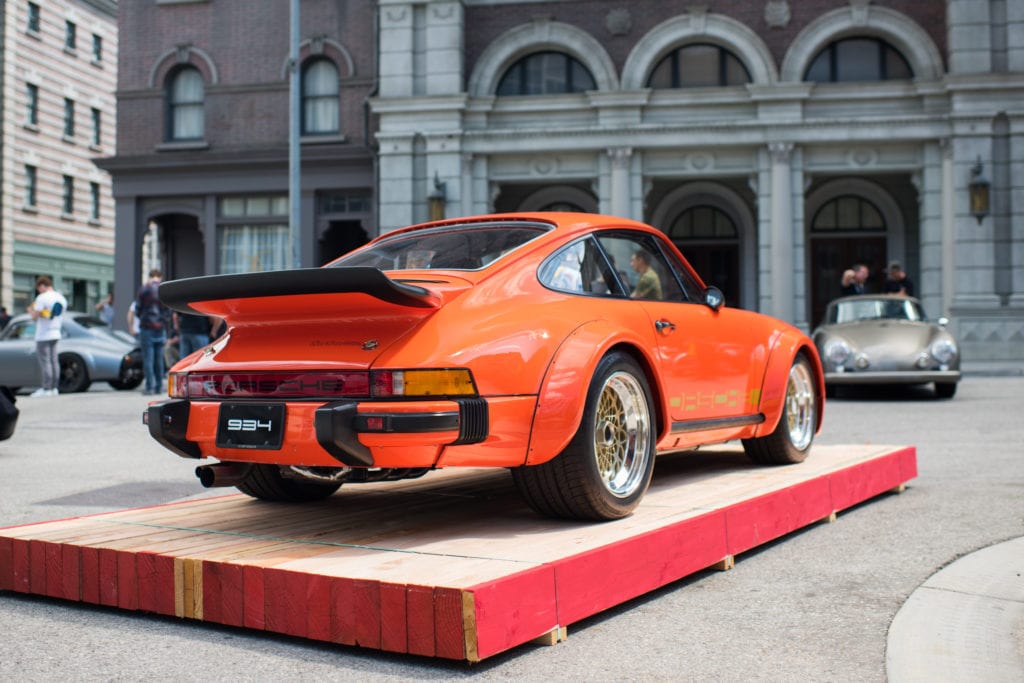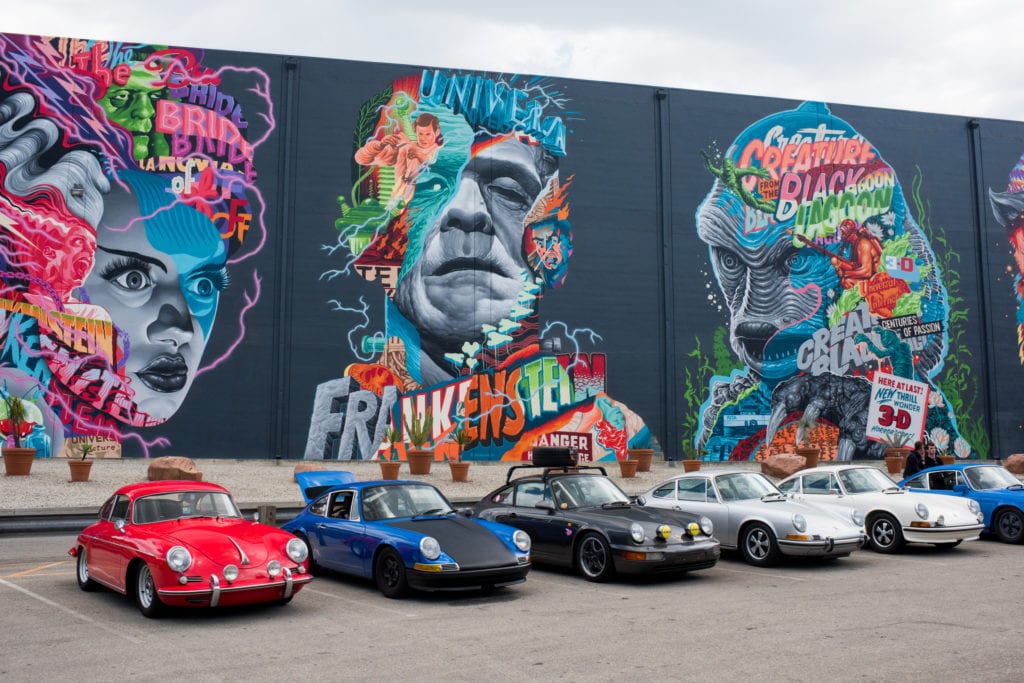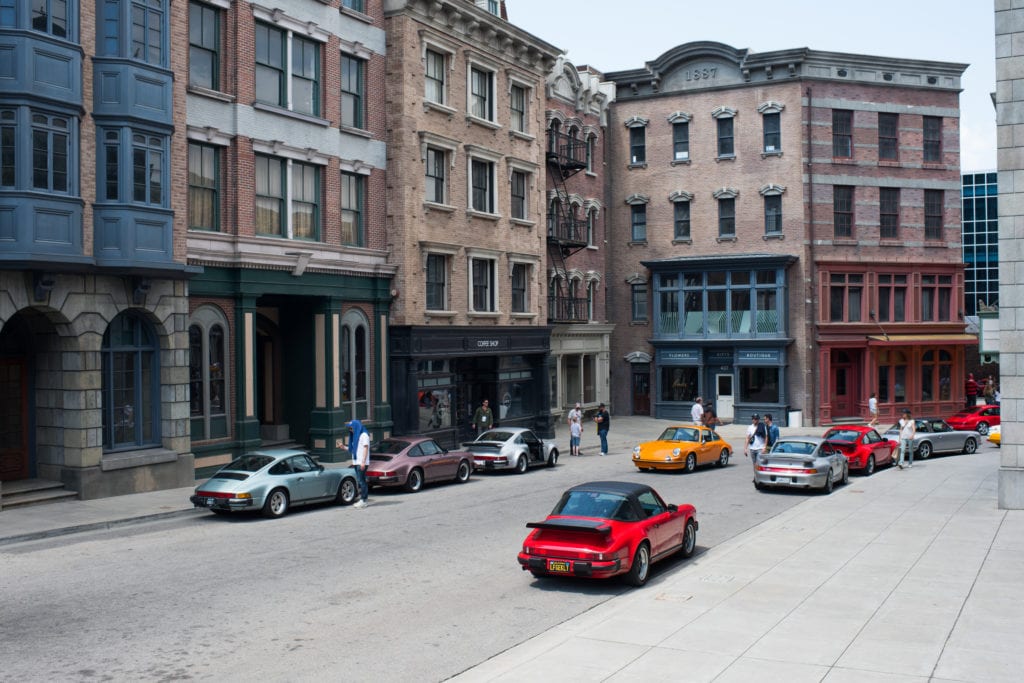Luftgekühlt’s Magic Formula
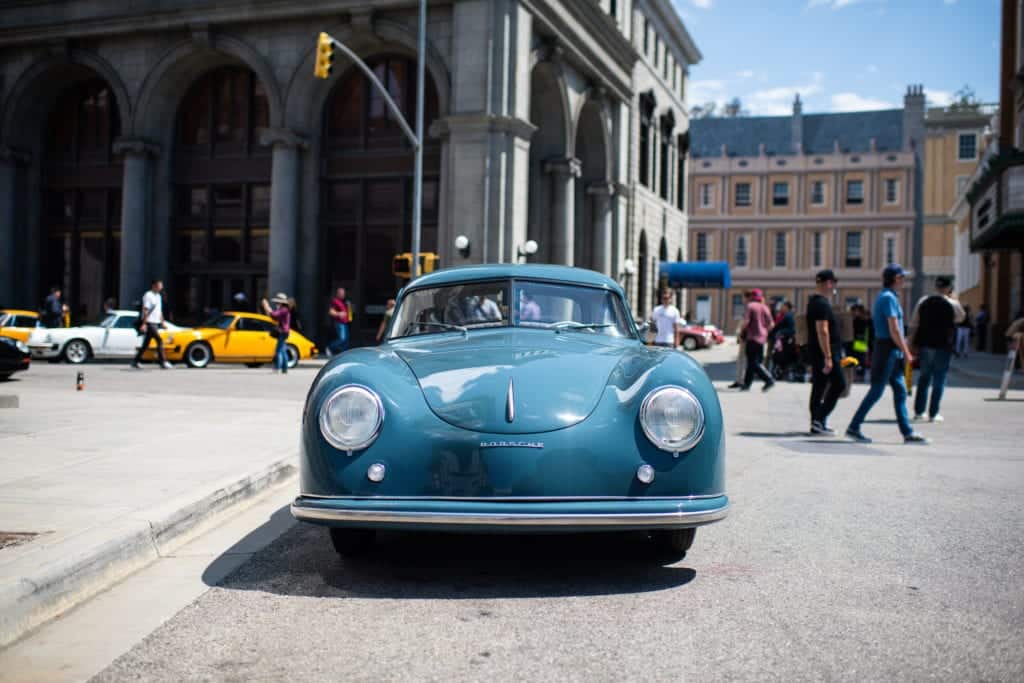
It is 7:45 on Saturday morning, and I’m trailing a brand-new Lizard Green Porsche 911 GT3 RS as we both merge onto the 101 Freeway. I feel like an ant joining the swarm – 911’s of every age are buzzing by en route to Southern California’s Universal City. It is the first indication that Luftgekühlt, a yearly gathering in L.A. of air-cooled Porsches, is no normal car show.
The parking lot for the show is a high-rise garage with hundreds of individually assigned parking spaces. (What self-respecting studio bigwig doesn’t have a named spot?) It is full of choice examples of Stuttgart’s finest. Even in the dark recesses of the unlit lot, enthusiastic Porsche conversations are already beginning…
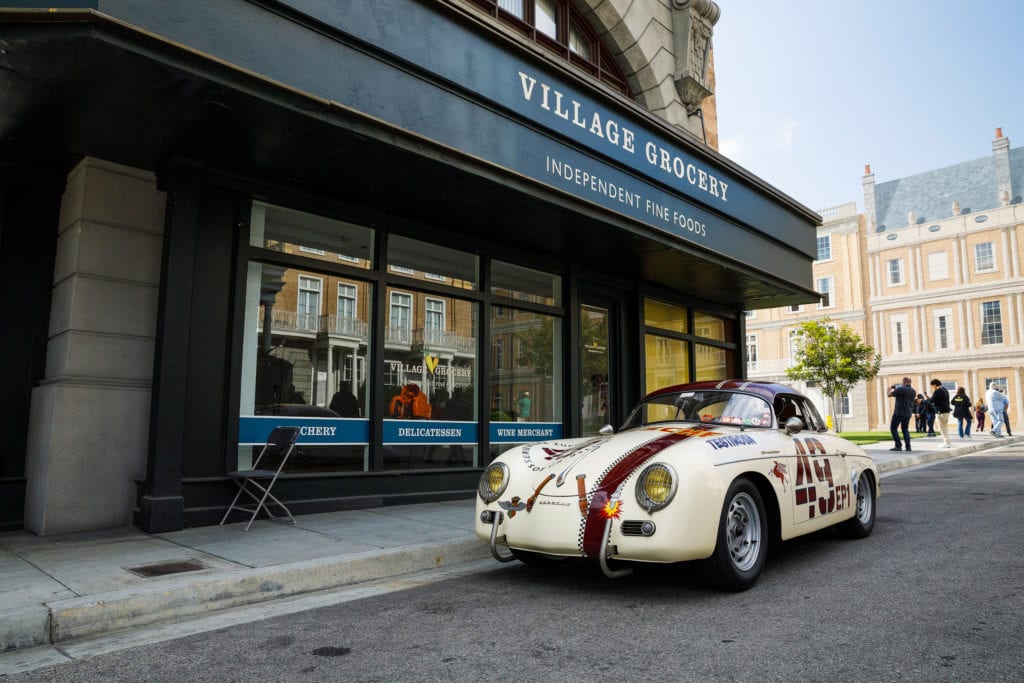
A short bus ride later, we step out into New York City — except that most boutique Manhattan grocers don’t have a Carrera Panamericana-liveried 356 Speedster sitting out front. Universal Studios’ backlot, the venue for the show, is sprawling but efficient, as many of the corner-lot buildings have a two-faced façade – with, say, New York on one side, a generic European city on the other. The result is that each area of the backlot, from the Wild West, to old Mexico, to the town square from Back to the Future, is self-contained but immediately accessible from the others, which serves to create a multitude of Porsche mini-exhibits. It is like walking through different rooms in an art museum.
The photographer, commercial film director, and Pikes Peak champion Jeff Zwart carefully choregraphed the placement of each car in the show. By all accounts, he did a masterful job. From the dust-covered barn-find 356 peeking out of a dark alley, goading onlookers with the vicarious thrill of discovery, to the posse of jacked-up rally Porsches posturing in a Mexican plaza, to Paul Newman’s 935 racer in front of an old-fashioned cinema, no detail seemed out of place.
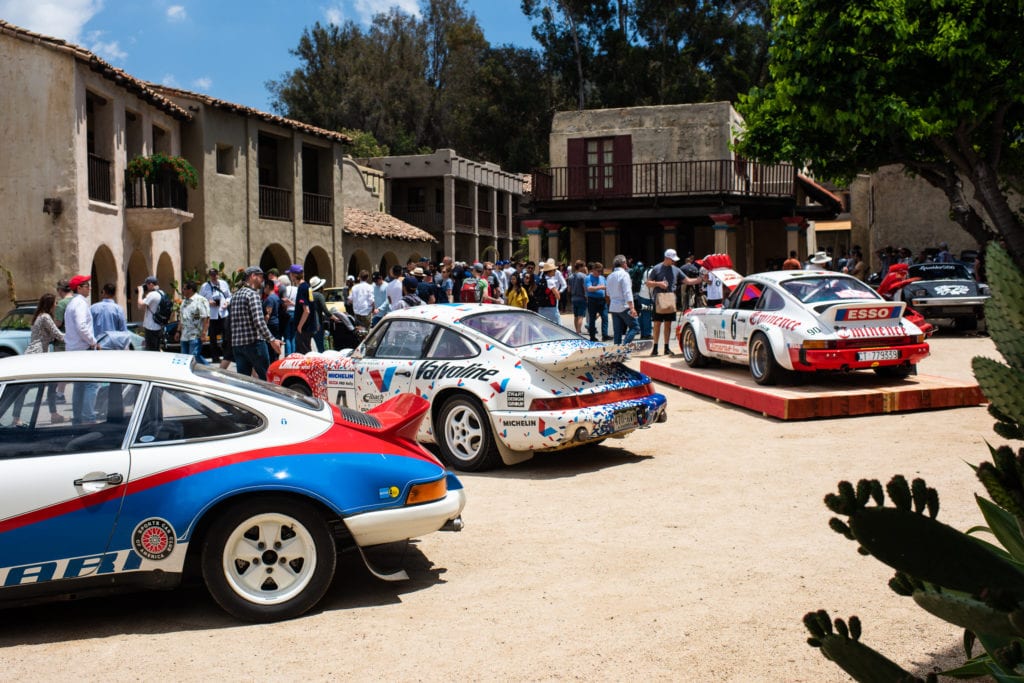
The show itself was a genuinely novel experience for even the most jaded L.A. enthusiasts, and the crowd seemed to buzz all day. Because Luftgekühlt changes venues every year, it really was an unrepeatable day. Many an article has been written about how millennials are hungry for differentiated experiences, and they were at Luftgekühlt in full force — whether pushing strollers or carefully composing photos on film cameras made before they were born. It was not your normal car show demographic.
And we haven’t even gotten to the cars yet! The criteria for the show is simple. Luftgekühlt means “air-cooled” in German, so any such Porsche qualifies — from the first split-window 356 Gmünd coupes, to the 993 generation of 911, which ended production 21 years ago. The show even featured a bright orange streamlined Porsche tractor once used in the coffee plantations of Brazil.
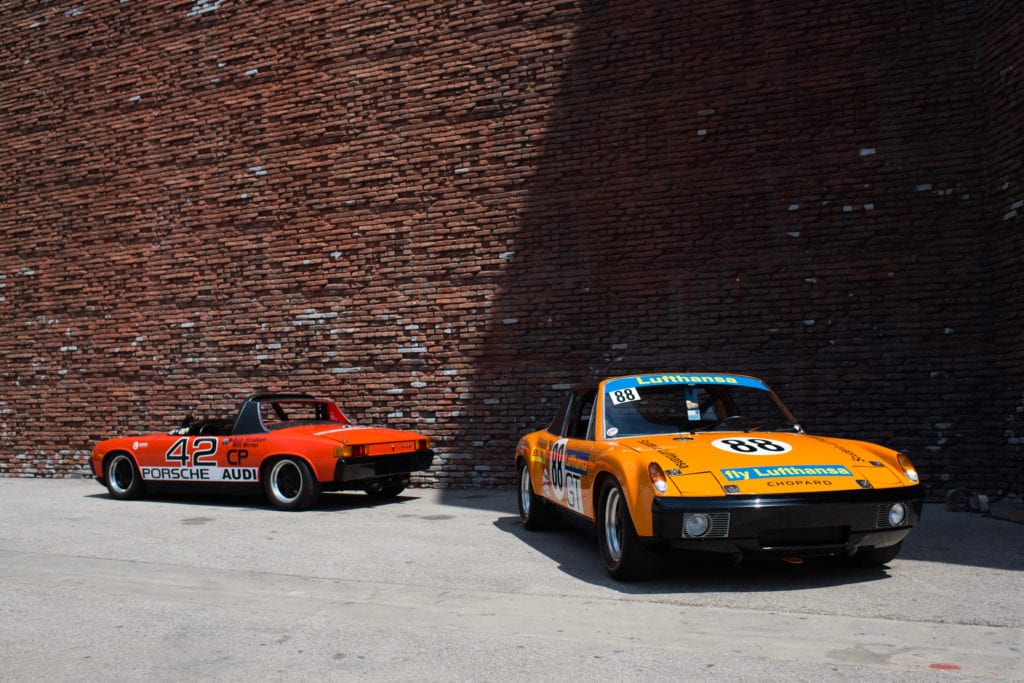
This year the organizers had a special class for the much maligned (or underappreciated, depending on your point of view) Porsche 914. It was a perfect example of how democratic the Luftgekühlt formula is. Porsche-philes flocked to the three 914-6 GT racers, which would not have looked out of place at Goodwood, and yet equal billing was given to 914’s of every flavor, from wildly tuned 914 R’s (as imagined by enthusiasts — Porsche never developed one) to beautiful original and restored street cars. Every example was clearly treasured by its owner, even if the values varied by three zeroes. As curated as the show is, it has far more in common with your local cars-and-coffee than it does with a shiny concours. There are no ropes, no awards, and no pretensions.
Ultimately, the show is an exercise in alchemy. The event’s co-founders, Porsche racing driver Patrick Long and artist Howie Idelson, continue to up the ante with ever-more-fantastic locations (from a hip furniture factory in 2016 to a lumber yard in 2018, to the setting of Back to the Future this year); diverse and drool-worthy spreads of cars (including four 917’s, a “never seen one before” 916, and a row of Rod Emory designed Outlaw 356’s); and friendly crowds of young people, families, and other creative professionals who wouldn’t set foot near the fill-in-the-blank Concours d’Elegance.
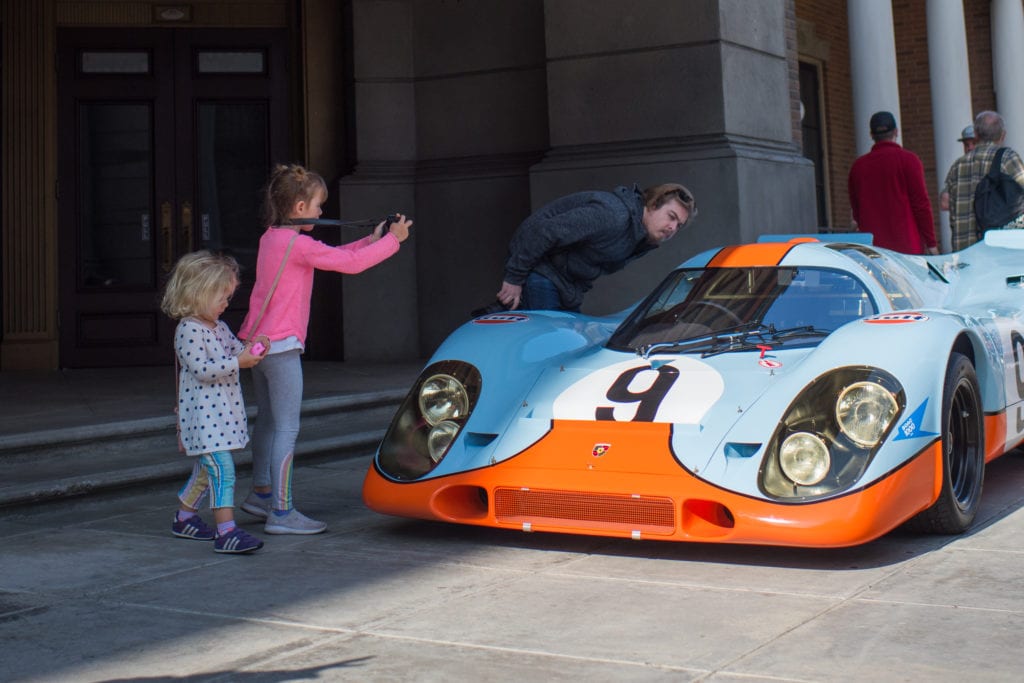
Counterintuitively, the show has gotten more cool, not less, as it continues to grow. There were 45-minute lines to buy T-shirts and posters before general admission even opened. Bands of Porsche owners rallied from San Francisco, Phoenix, and even the East Coast to attend. And the event’s success is even more impressive when you consider its name is basically unpronounceable unless you’ve heard it said elsewhere or you’ve taken Introductory German!
The question I heard over and over was, “How can they possibly top this year’s show?” But for me, the better question is: How can other show organizers channel some of the Luftgekühlt formula to inject their events with the same magical energy and enthusiasm? It might have a niche focus, but Luftgekühlt is truly a bellwether for the future of car enthusiasm.
